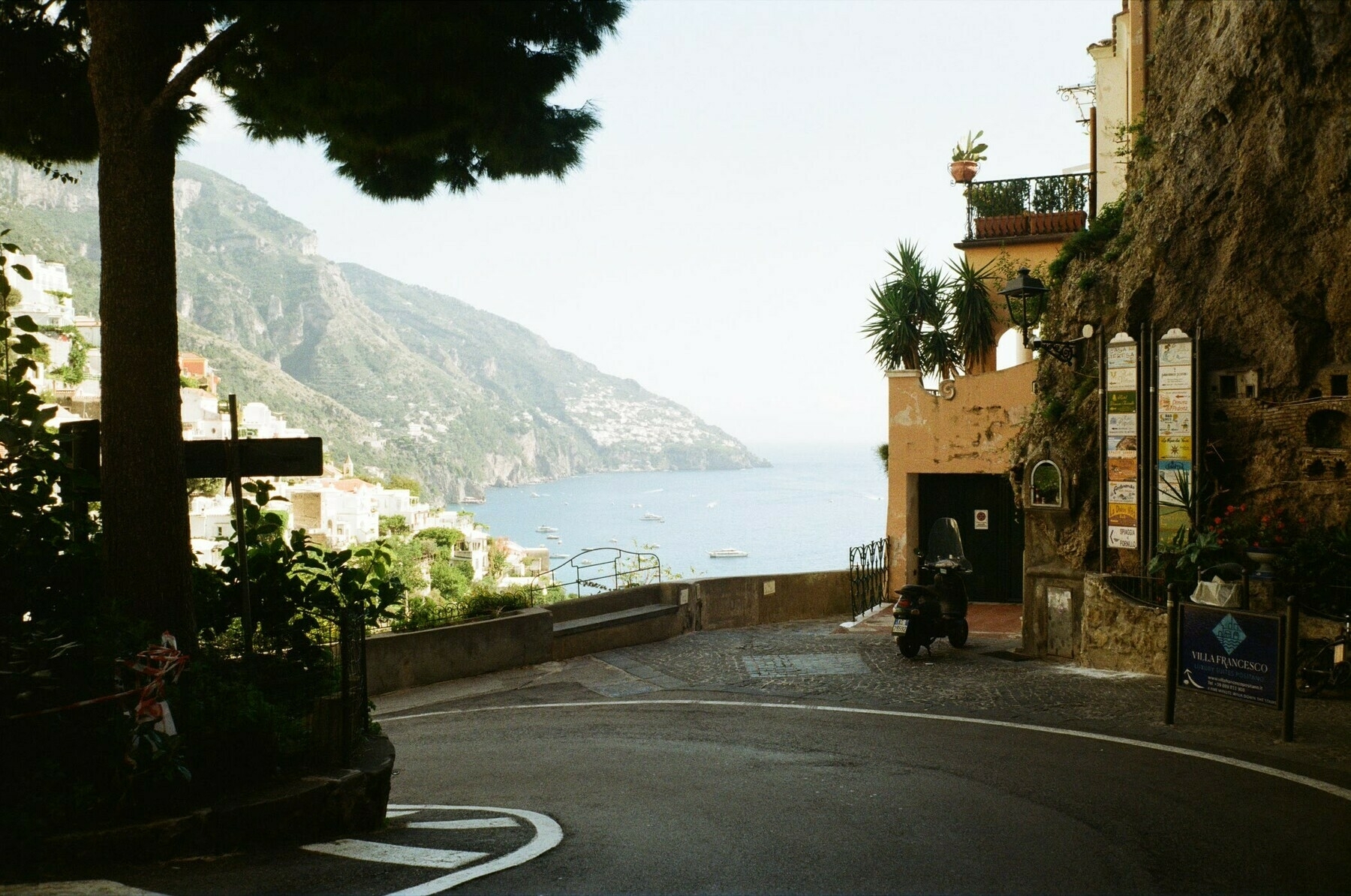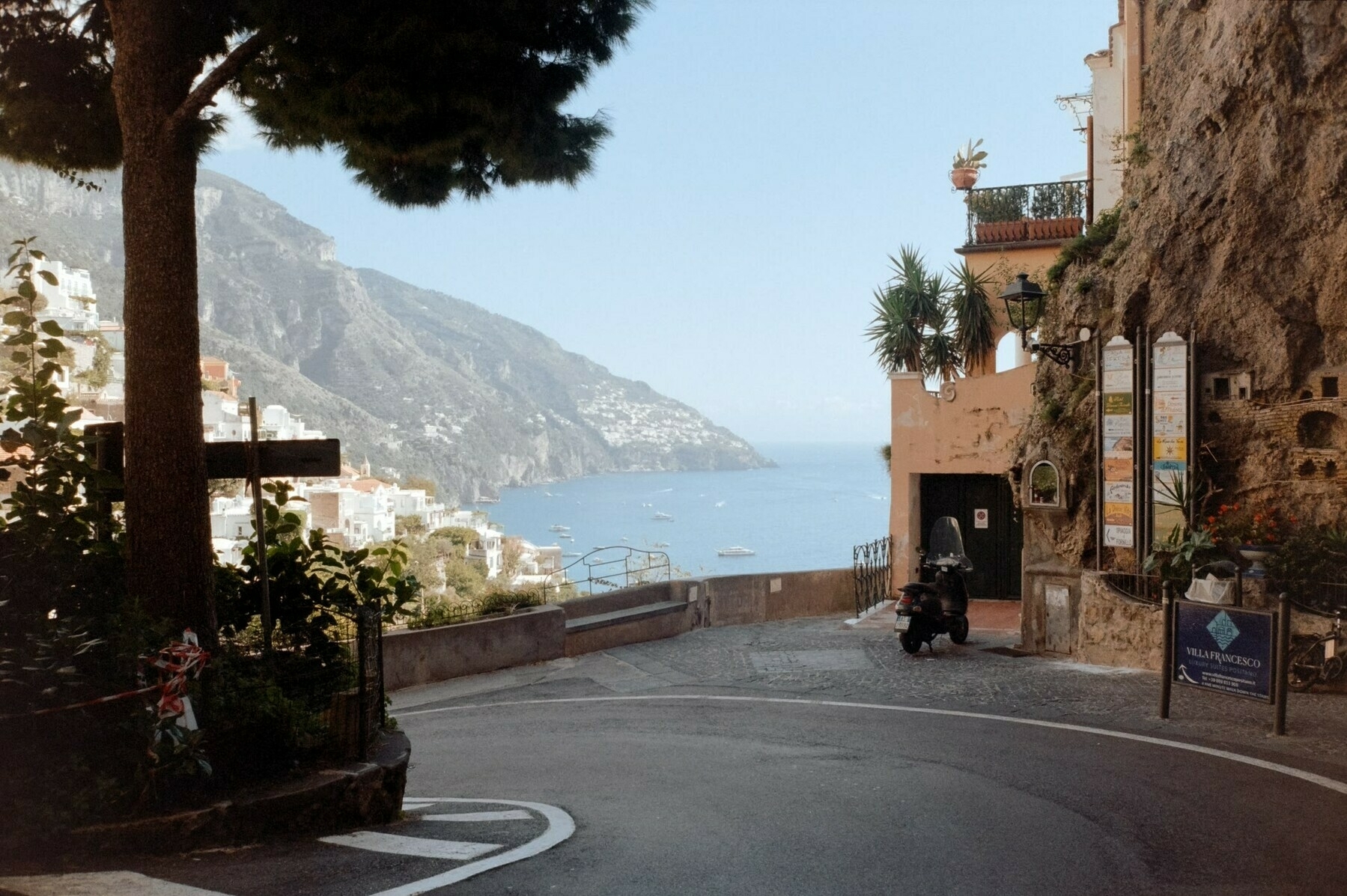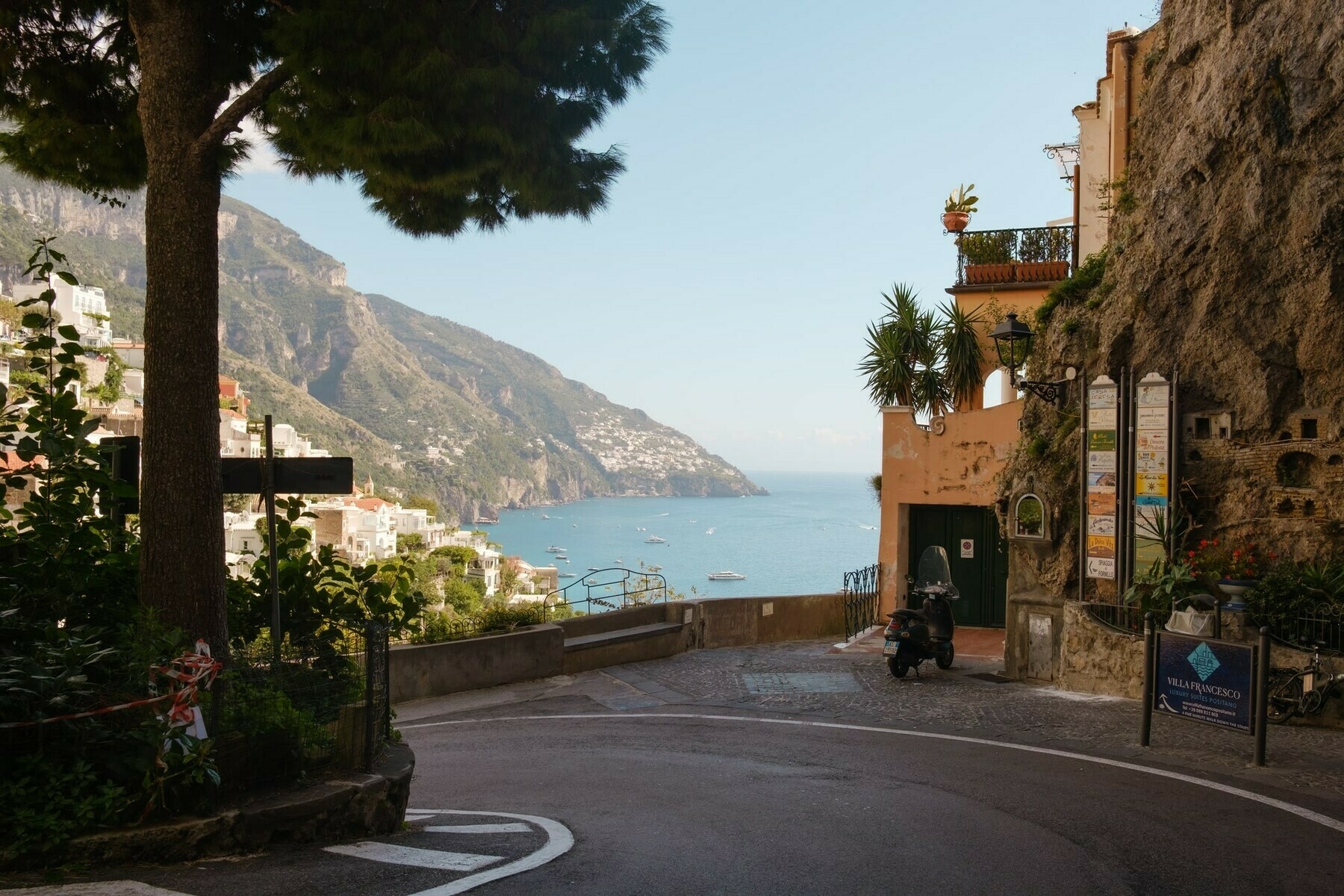One Scene, Two Cameras, Three Versions of a Photo
Last October, I spent my vacation on the Amalfi Coast. Positano was, of course, one of the most spectacular places I visited.
I decided to shoot hybrid on this trip, using both my digital camera and two analog cameras loaded with 35mm film.
Probably my favorite photo from that day in Positano is one I shared early on my website, which later inspired a small series called Positano in October.
The photo exists in both digital and analog versions—in this case, the film version was taken on Kodak Gold.
Usually, I prefer the colors from my film images over the digital ones. But with this particular scene, it was the opposite. The version I originally posted was the digital one, because the way I edited the RAW file matched what I had imagined when I took the shot. The film scan I got from the lab just didn’t have the qualities I love about film. The colors were off, there was too much contrast, and I lost a lot of detail in the highlights and shadows. It was still a decent photo, but just not quite right.
As time went by, I started getting into scanning my color film myself. I had already been scanning my black-and-white negatives because I develop those at home.
I kept thinking about rescanning that Positano photo myself, but never got around to it—until last weekend, when I finally had the time. I scanned the negative and processed it with Negative Lab Pro, and the result speaks for itself. There’s so much more detail in the shadows and highlights, and the colors look much closer to what I had in mind. It has all the character of the digital photo, but without the clinical sharpness or the sometimes unrealistic dynamic range. To me, it just feels more pleasant.
I guess the lesson here is: if you can, scan your own negatives. Photo labs can’t always recreate your creative vision—it’s something you have to do yourself.
For reference, here’s the digital image once again. I used Fuji’s Astia simulation as a starting point and tweaked the contrast and white balance until it looked the way I wanted.
The digital photo was shot on the Fujifilm X-E4 and XF23mmF2 R WR. The analog photo was shot on the Canon P and the Canon 35mm f2.8 LTM with Kodak Gold.


